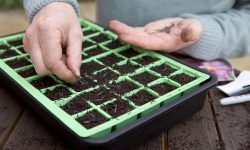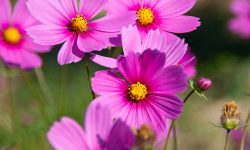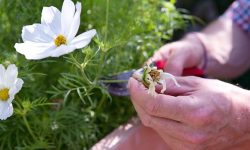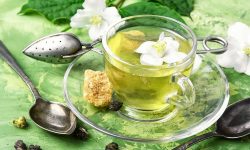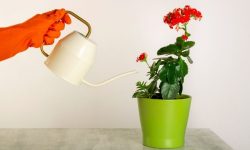Black Eyed Susans (Rudbeckia hirta) are a classic favorite among gardeners due to their bright, cheerful yellow petals and dark centers that bring life and color to any garden. Their resilience and ability to flourish in diverse conditions make them a staple in many landscapes. However, to unlock the fullest potential of these blooms and ensure they flower abundantly throughout the season, deadheading is a key practice that should not be overlooked.
Deadheading, or the removal of spent flowers, is a vital technique that helps Black Eyed Susans redirect their energy from seed production back into developing new blossoms. Without regular deadheading, these plants tend to slow down their flowering, focusing instead on producing seeds to propagate. By mastering the art of deadheading and combining it with thoughtful plant care, gardeners can encourage prolonged blooming periods, more vibrant flowers, and healthier plants overall.
This comprehensive guide delves into why deadheading Black Eyed Susans is crucial, the best timing and methods to do so, common pitfalls to avoid, and supplementary care strategies that will maximize flower growth and plant vitality all season long.
Understanding Why Deadheading Black Eyed Susans Boosts Flower Growth
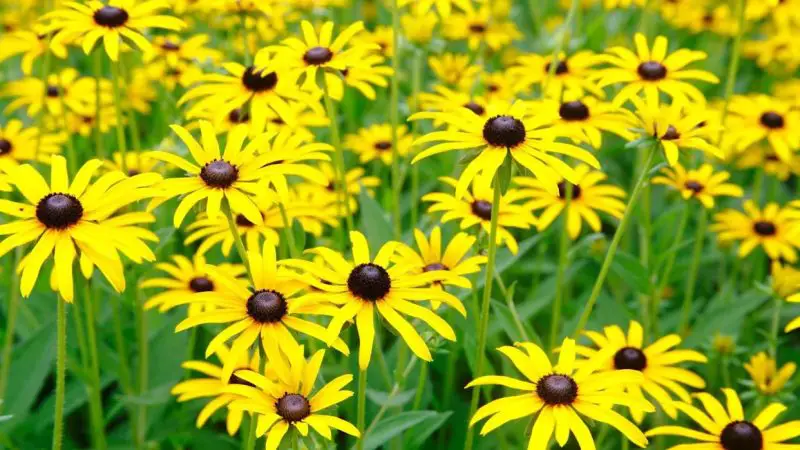
The biological process behind flowering and seed production explains the importance of deadheading. When a flower fades and begins to develop seeds, the plant’s resources are diverted from producing new blooms to nurturing those seeds. This shift naturally limits the amount of energy available for continuous flowering.
By removing spent blooms before seed formation, gardeners prevent the plant from transitioning into the reproductive phase focused on seed maturation. This forces the plant to maintain its energy on generating fresh flowers instead, thereby extending the blooming period and increasing the quantity of blossoms produced.
Moreover, deadheading helps maintain the plant’s aesthetics. Wilted or dying flowers can give a neglected look to a garden bed, diminishing the overall visual impact. By regularly removing these spent flowers, the Black Eyed Susans remain vibrant and attractive, inviting pollinators like bees and butterflies to visit, which in turn promotes a healthier garden ecosystem.
Beyond appearance, deadheading also plays a preventive role in plant health. Old flowers can become breeding grounds for fungal diseases and pests. Regularly clearing out these areas enhances air circulation around the plant, reduces moisture buildup, and helps keep fungal infections such as powdery mildew or leaf spot at bay. This holistic approach to plant care contributes to the longevity and vitality of Black Eyed Susans.
Optimal Timing: When to Deadhead Black Eyed Susans
The timing of deadheading is fundamental to achieving continuous flower growth. The process should commence as soon as the flowers start to fade and lose their vibrant yellow hue. Black Eyed Susans typically bloom from mid-summer to early fall, and throughout this period, regular inspection and deadheading are necessary to maintain a steady floral display.
Delaying deadheading allows seeds to develop, which not only consumes the plant’s energy but can also lead to self-seeding. While self-seeding can be beneficial in some garden designs to naturalize the plants, it may cause overcrowding, making the garden look unkempt or even suppressing new growth due to competition.
It is essential to remember that deadheading involves removing only the flower heads and not the foliage. The leaves of Black Eyed Susans continue photosynthesis, producing food that is stored in the roots and bulbs for the next cycle of growth and flowering. Removing leaves prematurely can stress the plant and reduce its blooming capability.
Step-by-Step Guide: How to Deadhead Black Eyed Susans Effectively
To deadhead Black Eyed Susans correctly, first identify which flowers have faded. Spent flowers will have petals that are brown, wilted, or shriveled, and the central disk may look dry or be starting to produce seeds.
Using clean, sharp garden scissors or pruning shears, cut the flower stem just above a healthy leaf node or lateral branch. This precise cut encourages new shoots to develop from that point, promoting bushier plants with more flowering sites. Cutting too low or too high can either damage the plant or fail to stimulate new growth effectively.
For smaller or container-grown plants, deadheading can be done by gently pinching off spent blooms with your fingers. It is important to handle the plant carefully to avoid breaking healthy stems or damaging developing buds.
To prevent the spread of disease, always sanitize your cutting tools before and after use, especially when working with multiple plants. Additionally, remove and dispose of the cut flowers rather than leaving them on the ground, as decaying plant material can attract pests and foster fungal growth.
Enhancing Flower Growth with Supportive Plant Care
While deadheading is a key practice to boost flowering, combining it with proper cultural care ensures the best results. Black Eyed Susans thrive in full sun, requiring at least six hours of direct sunlight daily. Insufficient sunlight can lead to weak, leggy plants with sparse flowering.
Watering is crucial during dry spells, as consistent moisture supports ongoing bloom production. However, these plants do not tolerate soggy soil; overwatering can lead to root rot and other fungal diseases. Applying mulch helps retain soil moisture and regulate temperature, reducing stress on the plants during hot weather.
Fertilization is another important aspect. Applying a balanced, slow-release fertilizer in early spring provides essential nutrients for growth. To encourage blooming, feeding with a phosphorus-rich fertilizer during the flowering season supports healthy flower development and prolonged bloom time.
As the plants mature, they may become crowded. Dividing or thinning clumps every few years rejuvenates the plants, improving air circulation and reducing competition for nutrients and light. This maintenance supports continued vigorous flowering and plant health.
Mistakes to Avoid When Deadheading Black Eyed Susans
Several common mistakes can undermine the benefits of deadheading. One of the most frequent is cutting the stems too harshly or too low. Removing too much foliage restricts the plant’s ability to photosynthesize and produce energy, which can stunt growth and reduce flowers. Always focus on cutting just the spent flower heads above a leaf node.
Neglecting to deadhead regularly is another pitfall. Allowing faded flowers to remain encourages seed formation, reducing energy for new blooms and increasing the likelihood of self-seeding and overcrowding.
Using dull or unsanitized tools can cause ragged cuts that invite disease and slow healing. Maintaining sharp, clean pruning tools protects your plants and promotes healthy regrowth.
Overfertilizing, particularly with nitrogen-heavy fertilizers, can lead to excessive leaf growth at the expense of flowers. Using a balanced or bloom-focused fertilizer ensures the plant receives the nutrients it needs to flower abundantly.
The Broader Impact of Deadheading on Plant Health and Garden Ecosystem
Deadheading has benefits beyond flower production. By preventing the accumulation of old flowers and seed heads, it helps reduce the incidence of fungal diseases and pest infestations. The improved airflow resulting from regular deadheading creates a less hospitable environment for pathogens, contributing to the overall health of Black Eyed Susans.
Furthermore, encouraging new growth through deadheading results in stronger, more resilient stems and foliage. Healthy plants are better equipped to withstand environmental stresses such as wind, heavy rain, and temperature fluctuations.
A vibrant display of Black Eyed Susans also attracts a variety of beneficial pollinators and wildlife, enhancing biodiversity in the garden. By maintaining these plants through proper deadheading, gardeners support a thriving ecosystem that benefits other plants and animals alike.
FAQs About How to Deadhead Black Eyed Susans
When is the ideal time to start deadheading Black Eyed Susans?
Deadheading should begin as soon as the flowers start to lose their color and show signs of fading. Early and consistent removal of spent blooms encourages continuous flowering throughout the growing season.
Is it better to deadhead by hand or with tools?
Both methods are acceptable. For smaller plants or delicate stems, pinching off spent flowers by hand is effective. For larger plants, using clean pruning shears or scissors provides a cleaner cut and reduces the risk of damaging the plant.
Should I cut the stems all the way back after deadheading?
No, it is important to cut just above a healthy leaf node rather than cutting the entire stem back. This encourages the plant to produce new shoots and flowers from that point.
What happens if I don’t deadhead my Black Eyed Susans?
Without deadheading, the plant’s energy shifts toward seed production, reducing new bloom formation. Additionally, old flowers can make the garden look untidy and increase the risk of disease.
How often should I deadhead during peak blooming?
Checking your plants every week or two and removing faded blooms as soon as they appear is ideal to maintain continuous flowering.
Can deadheading increase the size of Black Eyed Susan flowers?
While deadheading primarily increases the number and longevity of blooms, healthier plants with more energy can sometimes produce larger flowers as a byproduct of overall vigor.
What fertilizer is best to support flowering?
A balanced fertilizer with higher phosphorus content encourages strong flower production. Avoid excessive nitrogen, which promotes leaf growth over blooms.
Conclusion
Deadheading Black Eyed Susans is an essential and straightforward gardening practice that dramatically boosts flower growth and extends the blooming season. By learning the right timing and technique for deadheading, and complementing this practice with proper watering, fertilization, and sunlight, gardeners can enjoy vibrant, abundant blooms that brighten their gardens from summer through fall.
With attentive care and regular maintenance, Black Eyed Susans can provide years of cheerful color, enhance garden health, and support a diverse ecosystem of pollinators and beneficial insects. The effort invested in deadheading will be richly rewarded with flourishing plants and a stunning floral display season after season.

